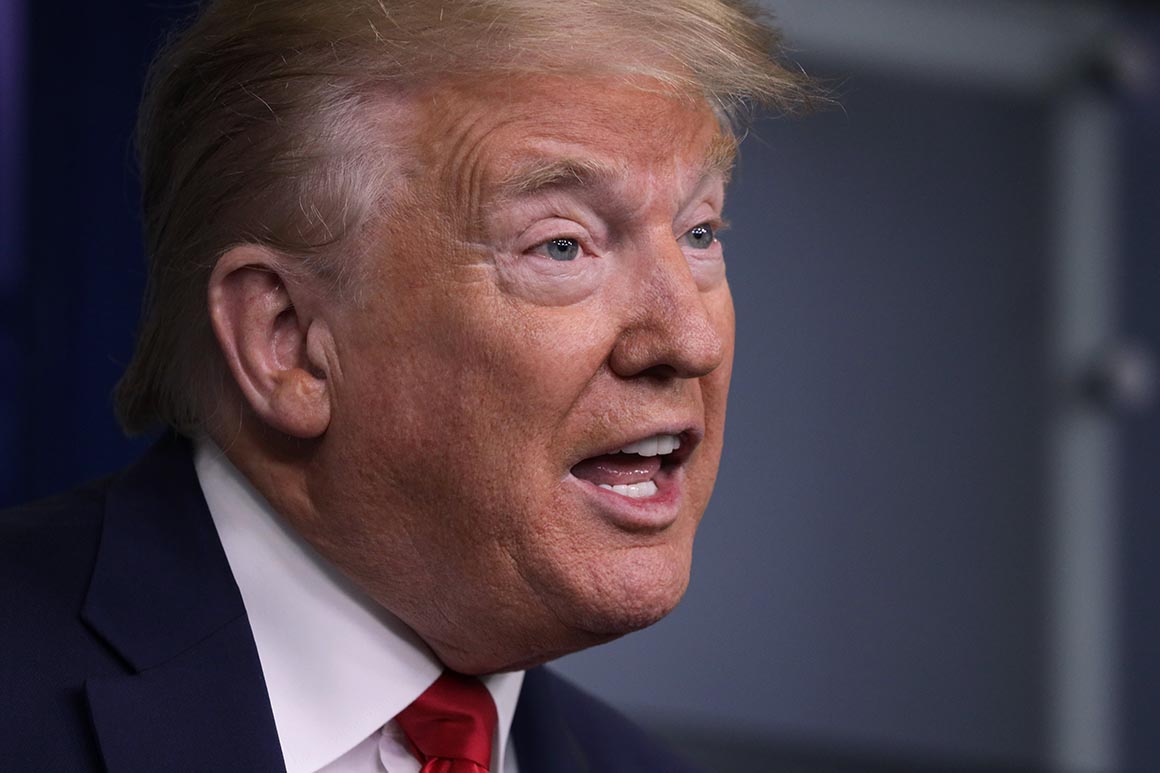
But it’s also a way the businessman-turned-politician tries to sell his administration’s work on any issue, touting big numbers or a large group of participants as proof of success. And Trump frequently frames the list — and its contents — in a selective manner, crafting the narrative he wants. Context is less important.
As the president has tried to convince the public of his success in responding to the coronavirus outbreak, Trump has similarly leaned on lists to try and defend his actions on testing, illustrate the support he has to reopen the economy and even display his dismay for governors and states he feels have gone too far with stay-at-home restrictions.
Just this past week, Trump reveled in a mental list he has been keeping of how many tests the U.S. has conducted, approaching 14 million, in comparison with other countries — Germany at 3 million, Italy at 3 million. That list, like so many others, is designed to ensure American is ranked No. 1. Trump deflected when a reporter asked how America’s testing compared to other countries on a per capita basis, a measure by which the U.S. lags behind several countries.
“You know, when you say ‘per capita,’ there’s many per capitas,” he said. “It’s like, per capita relative to what? But you can look at just about any category, and we’re really at the top, meaning positive on a per capita basis, too.”
Stephen Farnsworth, professor of political science at the University of Mary Washington and author of “Presidential Communication and Character,” called Trump’s strategy „the political version of a real estate agent trying to say, look at the size of the bedrooms, look at the size of the yard, or the school district. The longer the list is, the more likely someone can find something or someone on that list to like.“
The president outlined his use of bravado in his book “The Art of the Deal,” writing, “people may not always think big themselves, but they still get excited by those who do. That’s why a little hyperbole never hurts. People want to believe that something is the biggest and the greatest and the most spectacular.”
Anthony Scaramucci, Trump’s former communications director, said the tic is emblematic of the president’s unique way of communicating.
“Somebody that’s a more established politician will have a power point or a teleprompter and they’ll try to say the words in perfect paragraphs and it’ll be by and large not that inflammatory — and he does the opposite,” Scaramucci said. “That freewheeling nature — there’s a lot of mistruths, a lot of shots fired that bounce around in the box — people take it for granted that he’s going to do that. If you’re an established politician you need to be more contrived.”
It’s also simply a way for the president to cast blame.
In his first press conference after the 2018 midterm election, when Republicans lost control of the House, Trump’s response to the setback was to tick through a list of Republican lawmakers who didn’t embrace him and lost.
Months later, when Trump held an impeachment acquittal ceremony at the White House, the president was ready with insults for a list of political foes like former FBI Director James Comey, House Speaker Nancy Pelosi and House Intelligence Chairman Adam Schiff.
Other times, it’s a tactic deployed to simply filibuster or flatter.
At that same impeachment acquittal celebration, Trump also ticked off a list of “a great group of warriors” that included over a dozen Republican allies.
“Jim Banks of Indiana. Jim. Andy Biggs, where is Andy?” Trump called out. ”Bradley Burn, Alabama. What a great place. … Devin Nunes. Unbelievable. … Lee Zeldin, how good are you? And Lou [Gohmert], your name isn’t down.”
At another White House ceremony, convened in January to ostensibly laud a phase-one trade deal with China, Trump diverted from his teleprompter remarks and instead rattled through a list of guests and lawmakers for over thirty minutes as Chinese officials stood quietly behind him.
“Mike Crapo, a friend of mine,” Trump riffed. “Chuck Grassley. Where’s Chuck? … Dan Sullivan, from the great state of Alaska. Drew Ferguson. What a friend. … Jim Morrison, of Jeep. What a great brand Jeep is.”
But often, it’s just a way Trump tries to indicate the support for his initiatives.
When Trump convened reporters in the Rose Garden in April to announce a coronavirus economic task force , the president simply read down a long list of companies and executives he claimed were involved, from Jamie Dimon of JPMorgan Chase to National Football League Commissioner Roger Goodell.
The list ultimately sprawled to over 200 people, which the White House would form the “Great American Economic Revival Industry Groups.“ The list included all types of companies: Lockheed Martin, ExxonMobil, Visa, Chick-fil-A, 3M, Marriott, Best Buy.
Trump, Farnsworth said, “has tried to change the subject from the healthcare crisis to the economic crisis where the future may be more optimistic.”
He added: “President Trump is a gambler and he changes his bets regularly so that he can be judged by different metrics day by day.”
Source: politico.com
See more here: news365.stream






